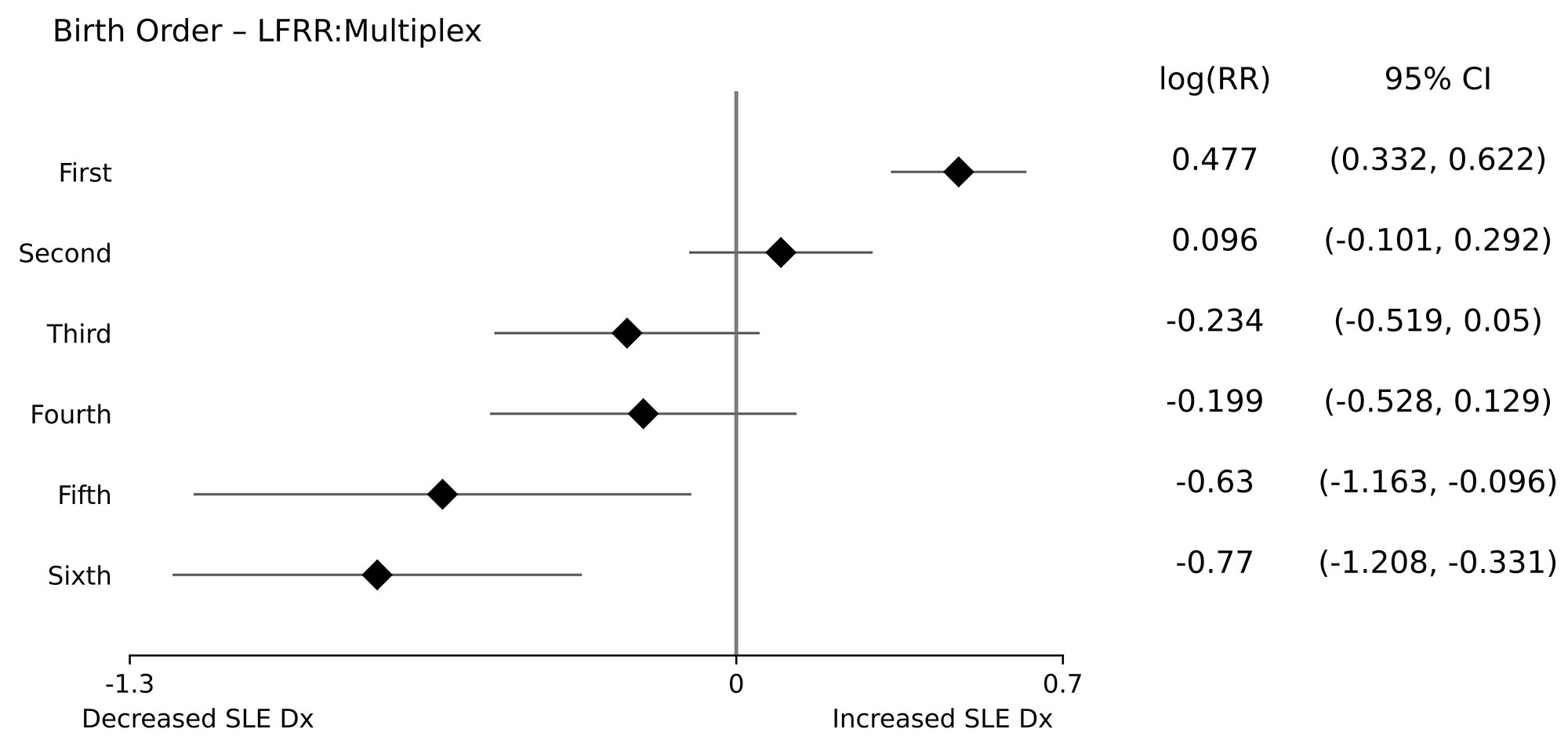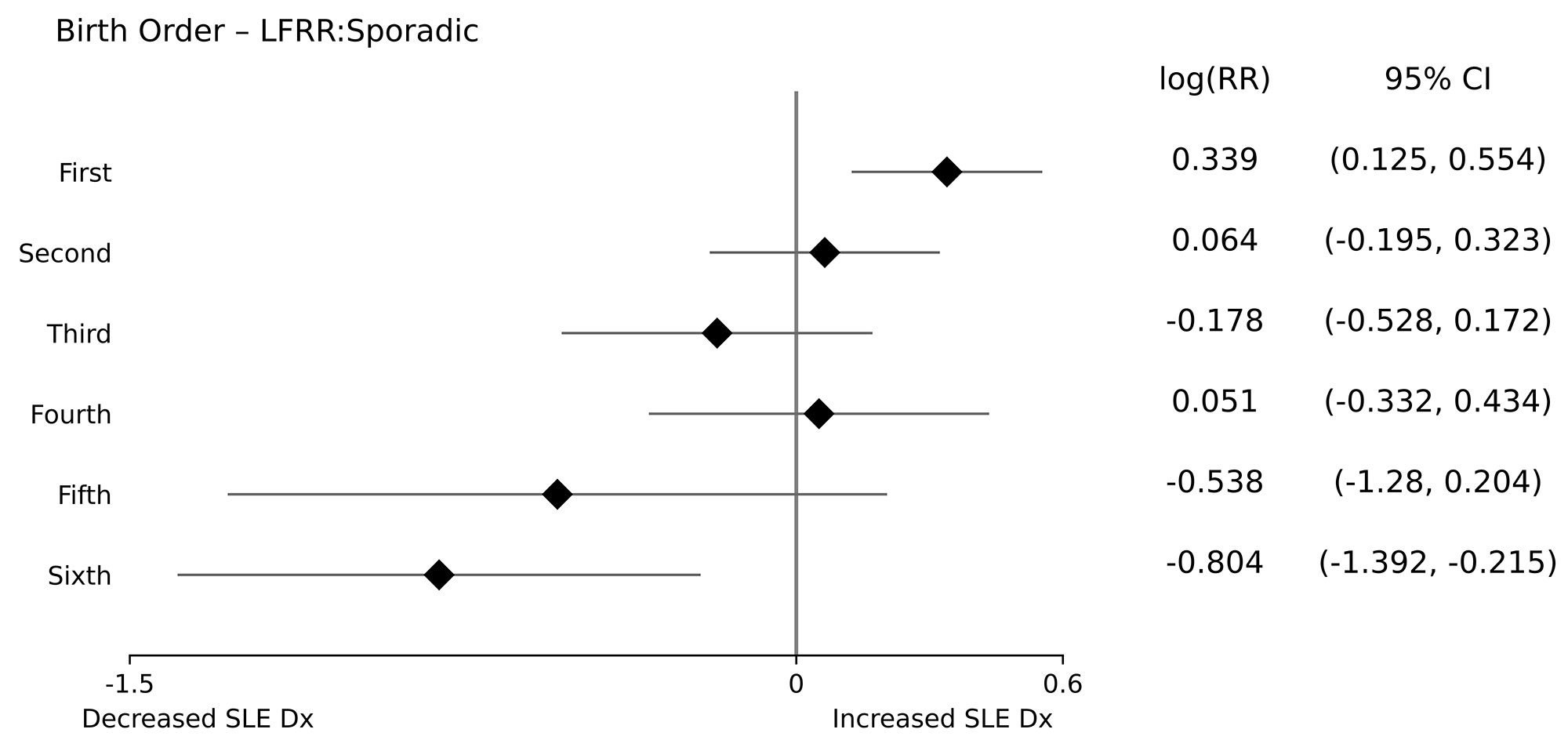Session Information
Date: Saturday, November 12, 2022
Title: SLE – Diagnosis, Manifestations, and Outcomes Poster I: Diagnosis
Session Type: Poster Session A
Session Time: 1:00PM-3:00PM
Background/Purpose: Birth order effects have been described in several immune and non-immune disease states. While some studies have found an increased risk of developing autoimmune disease with lower birth order, other studies have found no association at all. Prior studies investigated the association of birth order with SLE diagnosis using older classification criteria. A more recent study has investigated this question using a population-based nested case-control approach. Here, we evaluate the association of birth order with SLE diagnosis in a large collection of families with one or more SLE affected individuals.
Methods: In this study, we evaluated families with SLE that had either multiple individuals affected by SLE (multiplex) or a single individual affected by SLE (simplex). In the families with multiple individuals affected by SLE 247 sibships from a total of 164 family pedigrees were included from the Lupus Family Multiplex Repository and Registry (LFMRR) at the Oklahoma Medical Research Foundation. Sibships included in the study had at least one member affected with SLE, while all the multiplex families had at least 2 members with SLE lupus.
Separately, families with a single individual affected by SLE were analyzed comprised of two groups of families. The first group of families consisted of the families of 63 consecutive SLE patients entering the rheumatology clinic at the University of Oklahoma Health Sciences Center in Oklahoma City. The second group of families consisted of the families of 108 patients and their siblings recruited nationwide for the LFRR, a sporadic lupus registry. Each patient met ACR criteria for SLE classification. Categorical data for the number of SLE patients at each sibling position were examined by a χ2 analysis. The overall rate of SLE in the families studied was used to determine the expected rate of SLE at each birth order position, based on the numbers of siblings at each of the birth order positions.
Results: In both multiplex and simplex families, there was a higher relative risk associated with low birth order (i.e. first born – RR = 1.5 & 1.4 in multiplex and simplex families, respectively). Likewise, there was a trend towards decreased relative risk in the higher birth order siblings. Chi-square analysis revealed this trend to be significant (P < 1.3E-7 & P < 0.005, respectively). Analyses of the multiplex families stratified by self-reported ancestry revealed similar association in both European-American and African-American families.
Conclusion: Our study finds consistent association with lower birth order and SLE within families having both multiple and a single individual affected by SLE. An environmental factor, such as later acquisition of EBV could explain this association.
To cite this abstract in AMA style:
Shammas N, Ramani P, Aston C, Quintero-Del-Rio A, James J, Harley J, Harley I, Scofield H. Birth Order Is a Risk Factor for Systemic Lupus Erythematosus [abstract]. Arthritis Rheumatol. 2022; 74 (suppl 9). https://acrabstracts.org/abstract/birth-order-is-a-risk-factor-for-systemic-lupus-erythematosus/. Accessed .« Back to ACR Convergence 2022
ACR Meeting Abstracts - https://acrabstracts.org/abstract/birth-order-is-a-risk-factor-for-systemic-lupus-erythematosus/


